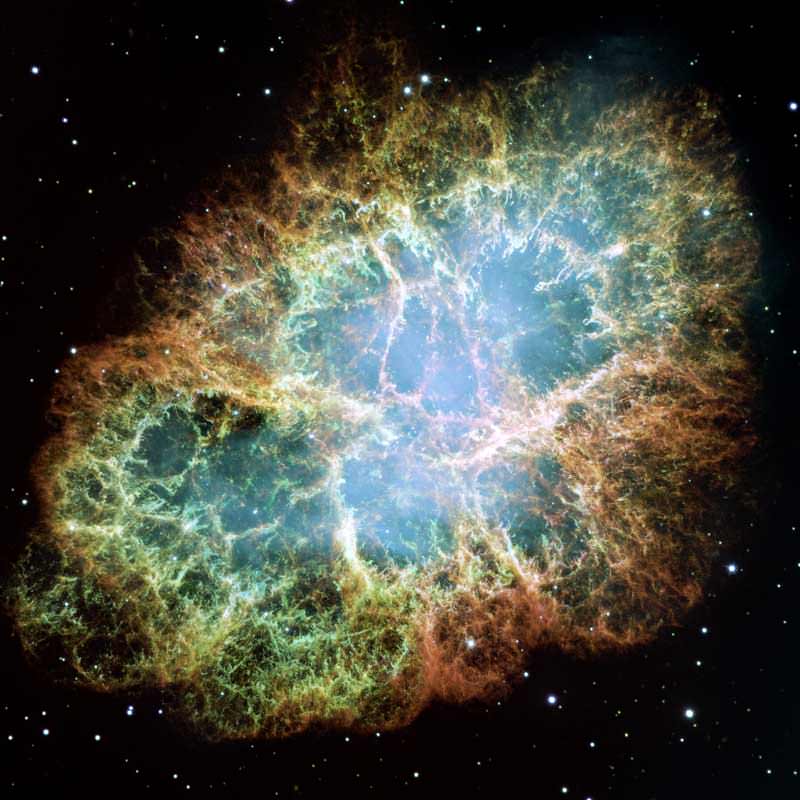Ancient iron-loving bacteria may have scooped up evidence of a nearby supernova explosion 2.2 million years ago, leaving an extraterrestrial iron signature in the fossil record, according to German researchers presenting their findings at a recent meeting of the American Physical Society.
In 2004, German scientists reported finding an isotope of iron in a core sample from the Pacific Ocean that does not form on Earth. The scientists calculated the decay rate of the radioactive isotope iron-60 and determined that the source was from a nearby supernova about 2 million years ago. The blast, they say, was close enough to Earth to seriously damage the ozone layer and may have contributed to a marine extinction at the Pliocene-Pleistocene geologic boundary.
Shawn Bishop, a physicist with the Technical University of Munich in Germany and the primary author of the recent study, wondered if traces of the supernova could be found in the fossil record as well. Some deep sea bacteria soak up iron creating tiny magnetic crystals. These 100-nanometer-wide crystals form long chains inside highly-specialized organelles called magnetosomes which help the bacteria orient themselves to Earth’s magnetic field. Using a core sample from the eastern equatorial Pacific Ocean, Bishop and his team sampled strata spaced about 100,000 years apart. By using a chemical treatment that extracts iron-60 while leaving other iron, the scientists then ran the sample through a mass spectrometer to determine whether iron-60 was present.
And in the layers around 2.2 million years ago, tiny traces of iron-60 appeared.
Although the scientists are not sure which star exploded to rain radioactive iron onto Earth, the scientists refer to a paper from 2002 that points to several supernovae generated in the Scorpius-Centaurus star association. The group of young stars, just 130 parsecs (about 424 light-years) from Earth, has produced 20 supernovae within the past 11 million years.
Source: Nature.com and APS.org “Abstract X8.00002: Search for Supernova 60FE in the Earth’s Fossil Record”, Physical Review Letters, “Evidence for Nearby Supernova Explosions” and 60Fe Anomaly in a Deep-Sea Manganese Crust and Implications for a Nearby Supernova Source.


Ooh, nice detective work and nice writeup!
The problem with the Pliocene-Pleistocene geologic boundary extinction(s) is the generic one of many culprits. The boundary itself is defined by a strata change that is caused by the global cooling that ushered in the last period of glaciations. Antarctic got its ice cap, and the North and South America collision that likely contributed or caused the cooling also promoted a decisive extinction (and later diversification). There were other plate tectonic changes, but perhaps minor contributions to the overall ecologic change.
[ http://en.wikipedia.org/wiki/Pliocene ]
But a confluence of stressors is, AFAIU, also believed to be a potential recurring provoker of extinctions.
That sounds pretty close Torbjörn [gulp!]. Are we moving towards or away from the Scorpius-Centaurus star association?
This article should help to relieve your fear. The solar system was only about 130 light years away then. It also provides a nice explanation of how the local bubble came about. Notice also the date this was written. This theory is not new, but has more evidence supporting it now.
http://physicsworld.com/cws/article/news/2002/feb/13/supernova-link-to-ancient-extinction
Well done GregtheThird,
Cheers.
I think the point is that these things are unlikely to harm by themselves, but are risks. We have much more problem with plate tectonics.
Ironically, the hot mantle is but 150 km away. We live on the hardened skin of a boiling blob of (very viscous) liquid. When I imagine it, I tend to get gulp-y about that. Our crust looks so harmless…
This makes me sceptical of claims that astronomers living in the far future, when galaxies outside our local cluster have drifted away, will be unable to detect the size of the universe.
How? They are not even remotely related.
Some day, in the not too distant future… we’ll have complete data sets from soils on the Moon. I wonder what those will say about nearby supernova?